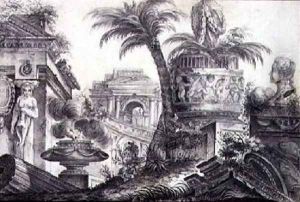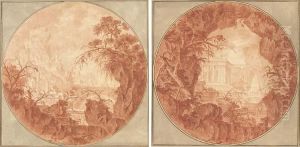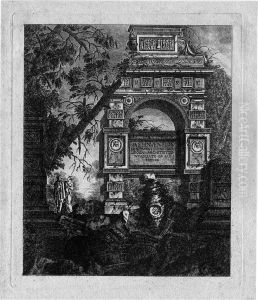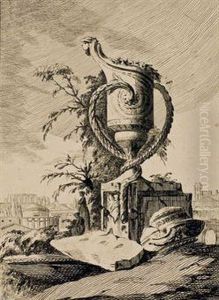Jean Laurent Legeay Paintings
Jean Laurent Legeay was a French architect and engraver, born in 1710 in Anjou, France, whose work became notable for its visionary and often fantastical architectural compositions. Despite the scarcity of information about his early life and education, Legeay emerged as an influential figure in the realm of architectural design and theory during the 18th century, a period rich in artistic experimentation and innovation. His contributions to architecture were primarily through his imaginative engravings and designs rather than built works, making him a unique figure among his contemporaries.
Legeay's career is marked by a significant period spent in Russia, where he worked under the patronage of the Russian court, contributing to the burgeoning interest in Western architectural styles among the Russian nobility. However, it was his return to Paris that heralded the most productive and influential phase of his career. In Paris, he became associated with the French Academy, although he never achieved the status of an academically recognized architect. Despite this, his artistic output, particularly his architectural fantasies, captured the imagination of the Parisian public and his peers alike.
His engravings, characterized by meticulous detail and imaginative flair, depicted fantastical structures that combined elements of the Gothic, Baroque, and Neoclassical styles, transcending the traditional boundaries of architectural practice of his time. These works were not mere flights of fancy but were imbued with a deep understanding of architectural principles and a visionary approach to space and form. They have been interpreted as both a critique of contemporary architectural practices and a radical reimagining of architectural possibilities.
Jean Laurent Legeay's influence extended beyond his lifetime, inspiring later generations of architects and artists intrigued by the intersection of imagination and architectural design. His work prefigured some of the conceptual approaches seen in later movements, such as the Romanticism of the 19th century and even the fantastical elements of 20th-century architecture. Despite his death in 1786, Legeay's legacy lives on through his engravings and designs, which continue to be studied and admired for their originality and visionary qualities. His contribution to the field of architecture, particularly in the realm of architectural illustration and design, remains significant, marking him as a distinctive and imaginative voice in the history of architectural thought.




